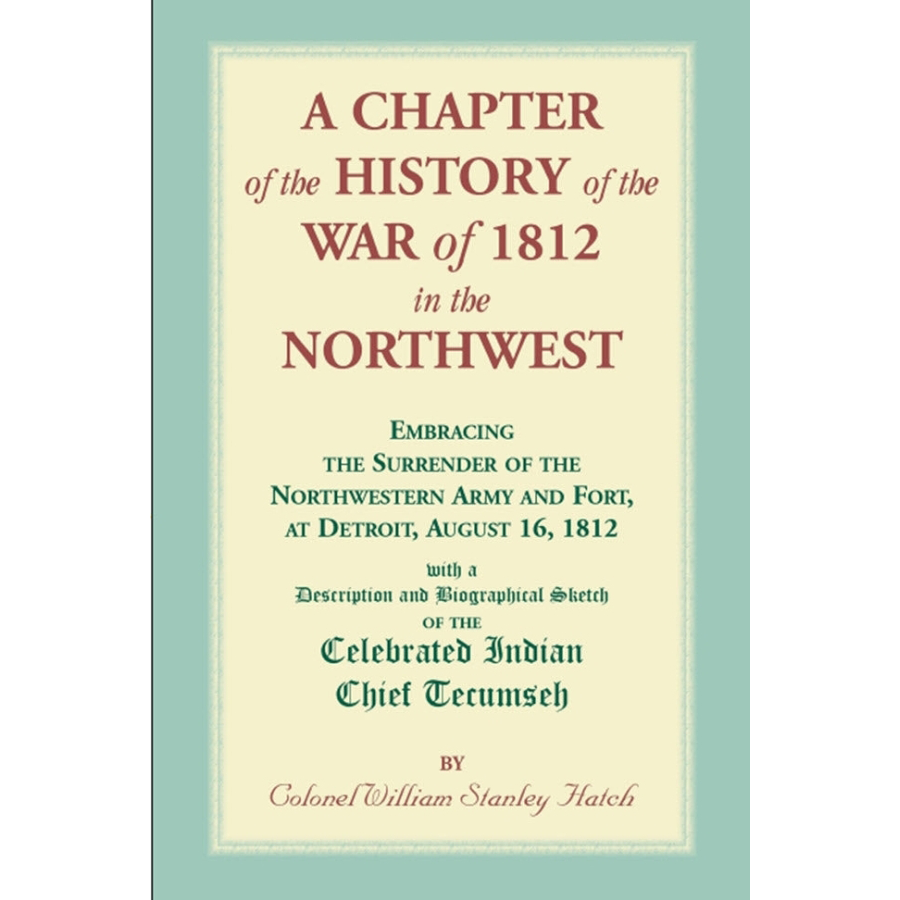A Chapter of the History of the War of 1812 in the Northwest
Couldn't load pickup availability
Embracing the Surrender of the Northwestern Army and Fort, at Detroit, August 16,1812
By the end of the Anglo-Indian war, the British army moved their forces to the established post of Malden at the entrance of the Detroit River. From this point, they retained their influence over the Indians, instigating and assisting the tribes' continuing hostilities toward the American settlers. By 1811, Tecumseh and his brothers had reached maturity and continued the struggle to regain their old territorial boundary of the Ohio River. Their actions to launch a universal war with the other Indian tribes against the American settlers resulted in a call for volunteers in Kentucky. In November 1811, the battle of Tippecanoe was fought, resulting in heavy losses on both sides.
Over the winter of 1811, the threat of war with Britain became so great that the government called for volunteers from Ohio to march to Detroit. Brigadier-General William Hull was placed as commander in chief of the newly formed Northwestern Army and in July 1812 invaded Canada.
By August of 1812, the Northwestern Army had surrendered at Detroit; it was theorized that Hull collaborated with the British General Brock. Through firsthand accounts, much not available elsewhere, of William Hatch, acting Assistant Quartermaster-General and a volunteer in the Cincinnati Light Infantry, we see the disastrous orders from Hull, refusing cattle for the troops, retreating instead of advancing on Malden, refusing to allow the destruction of an unfinished enemy battery, that lead to the surrender. Hatch's allegations lend support to the theory of connivance, but in and of themselves are inadequate as proof. A new surname index has been added.
William Stanley Hatch
(1872), 2012, 5.5" x 8.5", paper, index, 154 pp.
ISBN: 9780788427183
101-H2718

